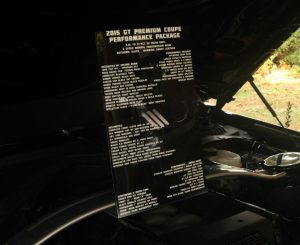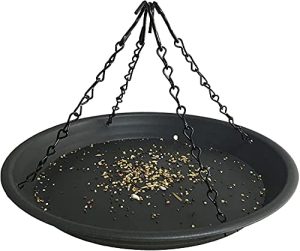Contents
- Understanding The Basics Of Double Kitchen Sink Plumbing
- Preparing For Double Kitchen Sink Plumbing Installation
- Step 1: Mounting The Double Kitchen Sink
- Step 2: Connecting The Dishwasher Drain To The Sink
- Step 3: Installing The Double Kitchen Sink Plumbing System
- Step 4: Checking For Leaks And Ensuring Proper Drainage
- Troubleshooting Common Double Kitchen Sink Plumbing Issues
- Maintenance Tips For Double Kitchen Sink Plumbing
- Frequently Asked Questions On Double Kitchen Sink Plumbing With Dishwasher
- Conclusion
Double kitchen sink plumbing with a dishwasher is a common setup where the dishwasher drainage is connected to either sink drain. We will discuss the plumbing process involved in connecting a dishwasher to a double kitchen sink and some important considerations to keep in mind.
Understanding The Basics Of Double Kitchen Sink Plumbing
Double kitchen sink plumbing with a dishwasher can be tricky to understand, but learning the basics is essential for a smooth operation and avoiding leaks or clogs. Ensure proper connections, check for leaks, and understand the dishwasher’s drain line to maintain a functional and efficient kitchen sink setup.
Have you ever wondered how the plumbing system of a double kitchen sink with a dishwasher works? Understanding the basics of double kitchen sink plumbing is essential for homeowners and DIY enthusiasts looking to tackle plumbing projects themselves. In this section, we will explore the components of a double kitchen sink plumbing system and discuss how it differs from a single kitchen sink plumbing setup.
Components Of A Double Kitchen Sink Plumbing System:
A double kitchen sink plumbing system consists of several essential components:
- Two sinks: The primary feature of a double kitchen sink is, of course, the two separate sinks.
- Drainpipes: Each sink has its own drainpipe that connects to the main drain line. These drainpipes are usually made of durable PVC or ABS material.
- P-Trap: The P-Trap is a curved section of pipe that helps prevent sewer gas from flowing back up into the sinks. It also assists in catching any small objects that may accidentally go down the drain.
- Tailpiece: The tailpiece is a short pipe that connects the sink drain to the P-Trap. It is usually adjustable in length to accommodate different sink heights.
- Ventilation Pipe: The plumbing system needs ventilation to allow air to escape, preventing pressure buildup in the pipes. A ventilation pipe is crucial for a well-functioning double kitchen sink plumbing system.
How It Differs From Single Kitchen Sink Plumbing:
Double kitchen sink plumbing differs from single kitchen sink plumbing in a few notable ways:
- Dual Drainpipes: One obvious difference is the presence of two separate drainpipes for the two sinks. These drainpipes require additional connections and maintenance compared to a single kitchen sink.
- Shared Drain: Despite having separate drainpipes, the two sinks usually share a common drain that connects to the main drain line. This shared drain requires proper alignment and sealing to prevent leaks.
- Dishwasher Connection: Another significant difference is the inclusion of a dishwasher connection. This connection enables the dishwasher to drain its wastewater into the double sink plumbing system. It requires a special connection point and a dedicated branch of the drain system.
Understanding the basics of double kitchen sink plumbing is crucial for anyone looking to install or maintain this type of plumbing system. With the knowledge of its components and how it differs from single kitchen sink plumbing, you’ll be better equipped to tackle any issues that may arise or confidently complete DIY plumbing projects in your kitchen.

Credit: kitchenandbathshop.com
Preparing For Double Kitchen Sink Plumbing Installation
Prepare your double kitchen sink plumbing for the installation of a dishwasher, ensuring smooth water flow and efficient drainage. Follow these steps to maximize the functionality of your kitchen and make dishwashing a breeze.
———————————————————-
Installing a double kitchen sink with a dishwasher can greatly enhance your kitchen’s functionality and convenience. Before diving into the installation process, it’s essential to properly prepare and gather all the necessary tools and materials. This section will guide you through the crucial steps of measuring and marking the positions of the sinks and dishwasher, as well as procuring the required tools and materials.
Measuring And Marking The Positions Of The Sinks And Dishwasher:
- Start by measuring the dimensions of your double kitchen sink and dishwasher, ensuring that they fit seamlessly into your countertop space.
- Determine the ideal placement for the sinks and dishwasher, taking into account your workflow and the existing plumbing connections.
- Use a measuring tape and a pencil to mark the exact positions of the sinks and dishwasher on the countertop, ensuring accurate alignment with the plumbing lines.
- Consider the appropriate distance between the sink and dishwasher based on your intended usage, while also taking into account any existing plumbing restrictions.
Gathering The Necessary Tools And Materials:
- Screwdriver: To remove any existing fixtures and tighten screws during the installation process.
- Wrench: For loosening and tightening various plumbing connections.
- Pipe cutter: Necessary for cutting and adjusting the plumbing pipes to fit the new sink configuration.
- Plumber’s putty: To create a watertight seal around the sink flanges.
- Plumber’s tape: Used to secure and prevent leaks in the plumbing connections.
- PVC primer and cement: Essential for bonding and securing the PVC pipes and fittings.
- Hose clamps: Required for tightening and securing hoses connected to the dishwasher.
- Silicone sealant: To create a waterproof seal around the edges of the sinks and countertops.
- Sandpaper or file: Useful for smoothening the rough edges of the newly cut pipe sections.
By carefully measuring, marking, and gathering all the necessary tools and materials, you are setting yourself up for a successful double kitchen sink plumbing installation. With each step meticulously completed, you can now move forward in confidently setting up your double kitchen sink and dishwasher, bringing enhanced functionality and streamlined efficiency to your kitchen space.
Step 1: Mounting The Double Kitchen Sink
Mounting a double kitchen sink with dishwasher plumbing can be done by following these step-by-step instructions. This guide will help you navigate through the process easily and efficiently.
Removing The Old Sink And Drain Pipes
Before you can install your new double kitchen sink with a dishwasher, you’ll need to remove the old sink and drain pipes. Here’s how you can get started:
- Turn off the water supply: Locate the water supply valves and shut them off to prevent any water flow.
- Disconnect the water supply lines: Use a wrench to detach the water supply lines that connect to the faucet.
- Remove the drain connections: Unfasten the nuts that hold the drain pipes together using pliers or a wrench.
- Detach the sink from the countertop: Loosen any clips or brackets holding the sink in place and carefully lift it from the countertop.
- Disconnect the garbage disposal (if applicable): If you have a garbage disposal unit, follow the manufacturer’s instructions to disconnect it from the sink drain.
By following these steps, you can effectively remove the old sink and drain pipes, making way for the installation of your new double kitchen sink and dishwasher.
Installing The New Sink And Connecting The Drains
After removing the old sink and drain pipes, it’s time to install the new double kitchen sink and connect the drains. Here’s how you can proceed:
- Position the new sink: Carefully place the new sink into the cutout on the countertop, ensuring it aligns properly.
- Secure the sink with clips or brackets: Use the provided clips or brackets to secure the sink to the countertop for stability.
- Connect the faucet and water supply lines: Attach the faucet to the sink following the manufacturer’s instructions, and then connect the water supply lines to the corresponding connections.
- Install the dishwasher drain line: If you’re adding a dishwasher, connect the dishwasher drain line to the sink’s drain pipe, ensuring a secure and watertight connection.
- Connect the drain pipes: Assemble the drain pipes under the sink, connecting them to the sink’s strainer and the existing drain line. Ensure each connection is tight and leak-free.
Following these steps will help you successfully install your new double kitchen sink and dishwasher, with properly connected drains that will efficiently manage the wastewater flow.
Step 2: Connecting The Dishwasher Drain To The Sink
Connecting the dishwasher drain to the sink is an essential step in double kitchen sink plumbing. Ensure a proper connection to prevent water leakage and maintain the smooth operation of your dishwasher.
When it comes to installing a double kitchen sink with a dishwasher, connecting the dishwasher drain to the sink is an essential step. By following these instructions, you can ensure proper drainage and avoid any potential plumbing issues.
Locating The Dishwasher Drain Hose Connection Point:
- Find the dishwasher drain hose, usually located beneath the kitchen sink. It is a flexible hose that connects the dishwasher to the sink’s plumbing system.
- Look for a small opening on the sink’s side or back, specifically designed for the dishwasher drain hose connection.
Attaching The Dishwasher Drain Hose To The Sink:
- Gently insert the end of the dishwasher drain hose into the designated opening on the sink. Ensure it fits securely to prevent leaks.
- Use a hose clamp or zip tie to fasten the dishwasher drain hose to the sink. This will provide additional security and prevent the hose from slipping or detaching during operation.
- Check for any loose connections or gaps between the dishwasher drain hose and the sink opening. Use plumber’s tape to seal any potential leaks.
- Once connected, double-check and ensure there are no kinks or twists in the dishwasher drain hose. A smooth and unobstructed flow is essential for proper drainage.
By following these steps, you can successfully connect the dishwasher drain to the sink, ensuring efficient operation and proper functioning of your double kitchen sink with a dishwasher.
Step 3: Installing The Double Kitchen Sink Plumbing System
Learn how to install a double kitchen sink plumbing system with a dishwasher, ensuring efficient functionality and proper drainage. Demystify the process step by step and enjoy a hassle-free kitchen sink setup.
Installing the double kitchen sink plumbing system can seem like a daunting task, but with the right instructions, it can be a simple and straightforward process. In this step-by-step guide, we will walk you through the process of connecting the sink’s tailpiece to the P-trap and installing the horizontal drain pipe, ensuring a smooth flow of water and waste from your double kitchen sink.
Let’s get started!
Connecting The Sink’S Tailpiece To The P-Trap:
- Begin by attaching the tailpiece, which is the vertical pipe that connects the sink drain to the P-trap, to the sink drain outlet.
- Ensure that the tailpiece is securely attached using a slip nut and washer, tightening it with pliers until it is snug.
- Make sure the P-trap is complete with the U-shaped pipe and the trap arm that connects to the drainpipe.
- Connect the lower end of the tailpiece to the curved section of the P-trap, aligning it with the trap arm.
- Slide a slip nut and washer onto the trap arm, and then insert it into the P-trap.
- Use pliers to tighten the slip nut, ensuring a watertight connection.
- Carefully check that all connections are secure and that there are no leaks.
Installing The Horizontal Drain Pipe And Connecting It To The Main Drain Line:
- Measure and cut a section of horizontal drain pipe that will span the distance between the P-trap and the main drain line.
- Ensure that the pipe is cut to the correct length, as a shorter or longer section may cause water flow issues.
- Insert one end of the horizontal drain pipe into the trap arm, sliding a slip nut and washer onto the pipe before making the connection.
- Align the other end of the drain pipe with the main drain line. If necessary, use a hacksaw to trim the pipe to fit correctly.
- Connect the horizontal drain pipe to the main drain line using a slip nut and washer.
- Tighten the slip nut with pliers, ensuring a secure and leak-free connection.
- Once all connections have been made, run water through the sink to check for any leaks or drainage issues.
By following these steps, you can successfully install the double kitchen sink plumbing system, allowing your dishwasher to drain properly and ensuring a smooth flow of water. Remember to check all connections for leaks and make any necessary adjustments for optimal functioning.
Happy plumbing!
Step 4: Checking For Leaks And Ensuring Proper Drainage
The fourth step in the double kitchen sink plumbing process with a dishwasher is to check for leaks and ensure proper drainage for optimal functionality.
After successfully installing the double kitchen sink and connecting the dishwasher, it’s important to check for any leaks and ensure that the drainage is working as it should. This step ensures a properly functioning kitchen sink and dishwasher setup. Let’s dive into how to test for leaks and optimize drainage:
Running Water Through The Sink And Dishwasher To Test For Leaks:
- Turn on the water supply valves for the sink and dishwasher.
- Run both hot and cold water through the sink, checking for any signs of leakage under the sink or around the connections.
- Pay close attention to the dishwasher’s supply and drain lines, verifying that there are no leaks or loose connections.
- If you notice any leaks, tighten the connections or replace any faulty parts to ensure a watertight system.
Adjusting The Drain Pipes For Optimal Drainage:
- Inspect the drain pipes under the sink, ensuring they are properly aligned and securely connected.
- Look for any obstructions or clogs in the drain pipes and remove them if necessary.
- Ensure that the P-trap is correctly installed and the water flows smoothly through it.
- Adjust the height of the drain pipes if needed, ensuring they have the proper slope for efficient drainage.
- Double-check that the dishwasher’s drain hose is securely connected to the drain pipe without any kinks or blockages.
By following these steps, you can ensure that there are no leaks in your double kitchen sink plumbing system and that the drainage is optimized for efficient functioning. Remember to test the system periodically to catch and resolve any potential issues early on.
Troubleshooting Common Double Kitchen Sink Plumbing Issues
If you’re experiencing plumbing problems with your double kitchen sink and dishwasher, our troubleshooting guide can help. Learn how to fix common issues with ease.
Double Kitchen Sink Plumbing With Dishwasher
A properly functioning double kitchen sink is essential for smooth cooking and cleaning experiences. However, plumbing issues can arise, causing inconvenience and frustration. We will focus on troubleshooting common double kitchen sink plumbing issues. Let’s explore how to identify and fix clogs in the drains, as well as deal with leaks and loose connections.
Identifying And Fixing Clogs In The Drains:
- Slow draining: If your sink is draining slowly, it is likely due to a clog in the drain pipes. Here’s how to address this issue:
- Inspect the drain stoppers: Remove any debris or food particles that may be obstructing the drains.
- Use a plunger: Seal one drain with a wet cloth and plunge the other drain to dislodge any clogs. Repeat the process on the opposite side.
- Try a drain snake: Insert the snake into the drain and rotate it to break up and remove the clog.
- Foul odor: A persistent foul odor emanating from your kitchen sink could indicate a clog. Try the following remedies:
- Pour boiling water down the drain: This can help dissolve grease and dislodge minor clogs.
- Utilize baking soda and vinegar: Mix equal parts of baking soda and vinegar, pour it down the drain, and let it sit for about 30 minutes. Flush with hot water to clear the clog and eliminate the odor.
Dealing With Leaks And Loose Connections:
- Leaking pipes: Leaks can occur at various points in the plumbing system, leading to potential water damage. Here’s what you can do:
- Inspect the pipes under the sink: Look for any visible signs of leaks, such as water dripping or pooling. Tighten loose connections or replace damaged pipes if necessary.
- Check the seals and gaskets: Faulty seals or gaskets can cause leaks. Inspect and replace them as needed.
- Loose connections: Over time, the connections between the sink, dishwasher, and drainage system can become loose, causing leaks or reduced functionality. Follow these steps to address the issue:
- Tighten the connections: Ensure all connections are properly tightened to prevent leaks. Avoid overtightening, as it may lead to damage.
- Use plumber’s tape: Apply plumber’s tape to the threaded areas of the connections to create a secure seal and prevent leaks.
By addressing clogs and fixing leaks promptly, you can maintain the smooth operation of your double kitchen sink with a dishwasher. Remember, if the problem persists or seems beyond your expertise, it’s always advisable to consult a professional plumber for assistance.
Maintenance Tips For Double Kitchen Sink Plumbing
Maintain the functionality of your double kitchen sink plumbing and dishwasher with these helpful tips. Avoid clogs by regularly clearing food debris, use a mesh strainer to catch small particles, and check for leaks in the pipes and connections.
Double Kitchen Sink Plumbing With Dishwasher:
Double kitchen sinks with dishwashers are a convenient addition in any modern kitchen. However, to ensure the smooth functioning of the plumbing system and prevent any potential issues, regular maintenance is crucial. Here are some maintenance tips for double kitchen sink plumbing that will help you keep your kitchen running smoothly:
Regular Cleaning To Prevent Clogs And Build-Up:
- Remove any debris: Clear away food particles, grease, and other debris from the sink and strainers regularly.
- Clean the disposal: If your sink is equipped with a garbage disposal, grind ice cubes and lemon peels to keep it clean and odor-free.
- Use hot water and dish soap: Regularly pour hot water and dish soap down the drain to dissolve any grease or residue that may have accumulated.
Inspecting For Any Signs Of Damage Or Wear:
- Check for leaks: Examine the pipes, connections, and seals for any signs of leaks. If you notice any moisture or water, address the issue promptly to prevent further damage.
- Look for corrosion: Inspect the pipes and fittings for any signs of corrosion. Corroded elements can weaken the plumbing system and lead to leaks or breakage.
- Ensure proper alignment: Check that the sink is properly aligned with the plumbing pipes. Misaligned components can cause issues with drainage and lead to leaks.
Maintaining The Dishwasher Connection:
- Clean the dishwasher filter: Regularly clean the dishwasher filter as recommended by the manufacturer. A clogged filter can affect the dishwasher’s performance and potentially cause drainage issues.
- Check the dishwasher hose: Inspect the dishwasher hose for any cracks or damage. Replace it if necessary to prevent leaks or water damage to your kitchen cabinets.
- Run vinegar through the dishwasher: To remove any mineral deposits or food residue, run a cycle with vinegar on an empty dishwasher once in a while.
General Maintenance Tips:
- Avoid pouring grease down the drain: Dispose of grease in a separate container instead of pouring it down the drain. Grease can solidify and cause clogs in the plumbing system.
- Use drain screens: Install drain screens or strainers to catch food particles, preventing them from entering the pipes and causing blockages.
- Be cautious with chemical cleaners: If using chemical drain cleaners, follow the instructions carefully and avoid excessive use as they can damage the pipes over time.
By following these maintenance tips, you can prolong the lifespan of your double kitchen sink plumbing system and avoid unnecessary issues. Regular cleaning, inspection, and care will ensure that your kitchen remains functional and free from plumbing problems.
Frequently Asked Questions On Double Kitchen Sink Plumbing With Dishwasher
Can Dishwasher And Sink Share The Same Drain?
Yes, a dishwasher and sink can share the same drain.
How To Unclog A Double Kitchen Sink With Garbage Disposal And Dishwasher?
To unclog a double kitchen sink with garbage disposal and dishwasher: 1. Turn off the garbage disposal and dishwasher. 2. Check for any visible blockages in the sink drain. 3. Use a plunger to create suction and clear the clog. 4.
If the clog persists, remove the trap under the sink and clean it out. 5. Run hot water down the drain to flush out any remaining debris. 6. Turn on the garbage disposal and dishwasher to check for proper drainage.
What Size Drain Pipe For Kitchen Sink And Dishwasher?
The recommended drain pipe size for a kitchen sink and dishwasher is typically 1½ inches in diameter.
Can A Dishwasher Drain Directly Into Waste Line?
Yes, a dishwasher can drain directly into the waste line.
Conclusion
To conclude, incorporating a double kitchen sink plumbing system with a dishwasher can greatly enhance your kitchen’s functionality and efficiency. By having two separate sinks, you can designate one for food preparation and the other for dishwashing. This setup allows for easy multitasking and minimizes the chances of cross-contamination.
Adding a dishwasher to the equation further saves time and energy, as it takes care of the bulk of the washing process while you attend to other kitchen tasks. Additionally, it promotes better hygiene by ensuring that dishes are thoroughly cleaned and sanitized.
With proper installation, regular maintenance, and well-designed plumbing, you can enjoy the benefits of a double kitchen sink and dishwasher combination for many years to come. Upgrade your kitchen today and experience the convenience and effectiveness of this versatile setup.










